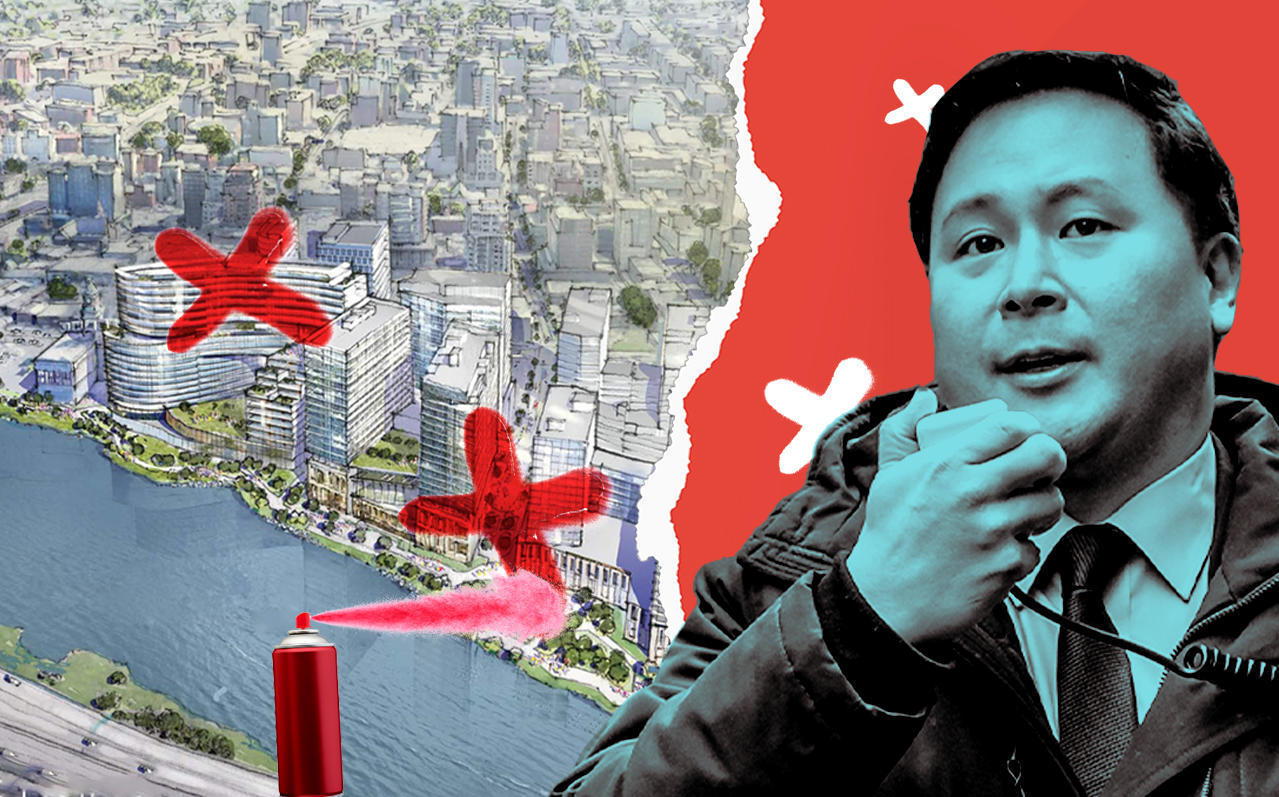This should be a happy week for real estate, with a Flushing megadevelopment getting the City Council’s blessing after nearly being derailed by politics and labor issues.
It was a big win after a string of private developments failed to survive the gauntlet of “progressive” New York City politics, among them Amazon’s HQ2, the Olnick Organization’s Lenox Terrace expansion and Industry City’s rezoning.
But the Flushing experience reopened industry wounds that had not healed, and perhaps never will.
Read more



The developers behind the project had some clear advantages. They were working with a City Council member, Flushing’s Peter Koo, who badly wanted them to succeed. They were transforming an inaccessible, decrepit waterfront into a community showcase. They were asking for very little extra square footage. And they were investing $2 billion in a city where a million jobs just disappeared.
Despite all this, a dozen Council members publicly bashed the proposal, and it took last-minute concessions to two labor unions to save it. Even then, some Council members were reluctant to go along, with one grumbling that he only did so because the as-of-right alternative was even worse.
The reaction of one Flushing lawmaker was especially telling. Assembly member Ron Kim wrote an op-ed saying the new condos, hotels and restaurants whose ribbon-cuttings he once proudly attended were, in fact, “plunging large swaths of people into poverty.”
Kim failed to make the case that the people who build and work in these businesses end up poorer. But he did pin that ignominious label on the Flushing megaproject. Why?
It’s not because Kim fears the Democratic Socialists of America could unelect him. He’s regarded as a pioneer and a hero in his district, not just for being the first Korean-American elected in New York, or tackling a purse-snatching suspect on the street, but for standing up to Gov. Andrew Cuomo.
Do you remember? The drama followed a 2015 New York Times exposé portraying nail salon owners as taking advantage of immigrant workers. Kim initially stood with Cuomo when the governor swooped in promising to help trapped, underpaid women. But the Assembly member later met with salon owners and concluded that Cuomo was punishing them unfairly.
Kim became a vocal critic of the governor’s salon reforms. He was the only elected Democrat in the state willing to confront Cuomo, who was the party’s standard-bearer and the most intimidating figure in state politics. It was an especially brave move for a low-ranking, third-year legislator.
When Kim sides against condos and restaurants and hotels, it is clear that real estate is still in big trouble. The pandemic has not, as some hoped, made more New Yorkers grateful for developers’ investment and job creation. Instead, critics have doubled down on the idea that the industry should subsidize more housing.
Kim went even further, blaming real estate for poverty.
“As more and more luxury condos began construction, we saw more and more homelessness in the streets,” he wrote. “As more and more mega-malls neared completion, more and more elderly were digging for scraps in the trash.”
The inclination to blame development for social problems has become endemic, largely because luxury apartment towers — every market-rate unit is deemed “luxury” — are a visible manifestation of income inequality.
Development is easy to see, unlike the global economic forces, tax codes, policies and biases that contribute to the wealth gap. Builders do lobby and donate to campaigns, but do not create income inequality so much as cater to it.
I have known Kim since the nail salon saga, when I defended him against the Times’ lazy insinuation that he switched sides because of campaign contributions by salon owners. I emailed him Monday about his op-ed, pointing out that the 1 percent, by definition, are just 1 percent of households. If real estate marketed only to them, it would not have enough customers.
What opponents of market-rate housing miss is that New York does not have an infinite number of rich people to fill it.
“Developers build apartments they think they can sell,” I wrote to Kim. “The roots of income inequality and poverty are complex and are not caused by the kind of projects planned for the Flushing waterfront.”
He replied promptly.
“We are in a feedback loop,” he said. “The market for luxury developments only exists when we have concentrated wealth and economic inequality. Yes, 40 years of untaxed wealth and unregulated private capital growth, stagnant wages and weakened labor groups caused inequality. However, to pretend these conditions were created by market fundamentalism and not by co-opting the law, is where we diverge.”
The feedback loop is that the system’s winners support policies that reinforce their place in it. But ultimately, elected officials make the rules. Kim does get that.
“That’s why my colleagues and I are going to Albany to fix the incentives and restructure the laws and markets to function for working families and people,” he said.
Kim opposed the Amazon project as well as the Flushing one. These positions anger and baffle real estate interests. But he does listen and understands that incentives, not immorality, drive decisions.
The socialists want to kill markets; Ron Kim wants them to benefit more New Yorkers. He has sided with business owners before. He seems like the kind of lawmaker with whom real estate could find common ground. And needs to.




